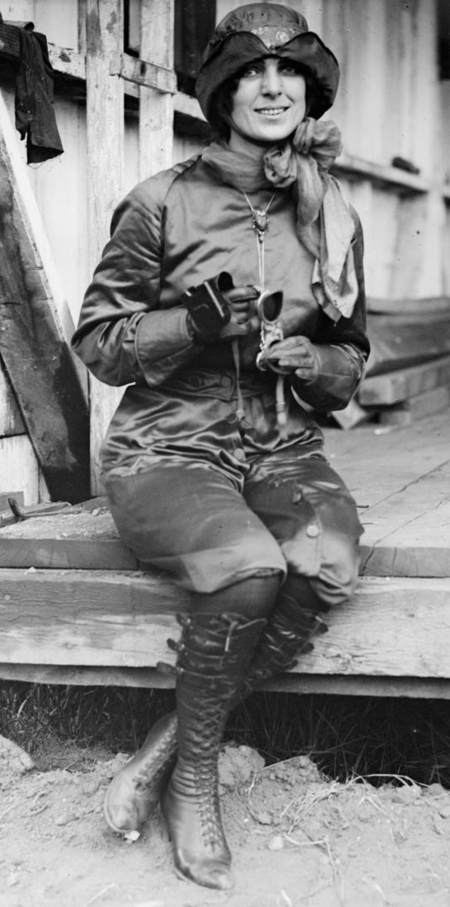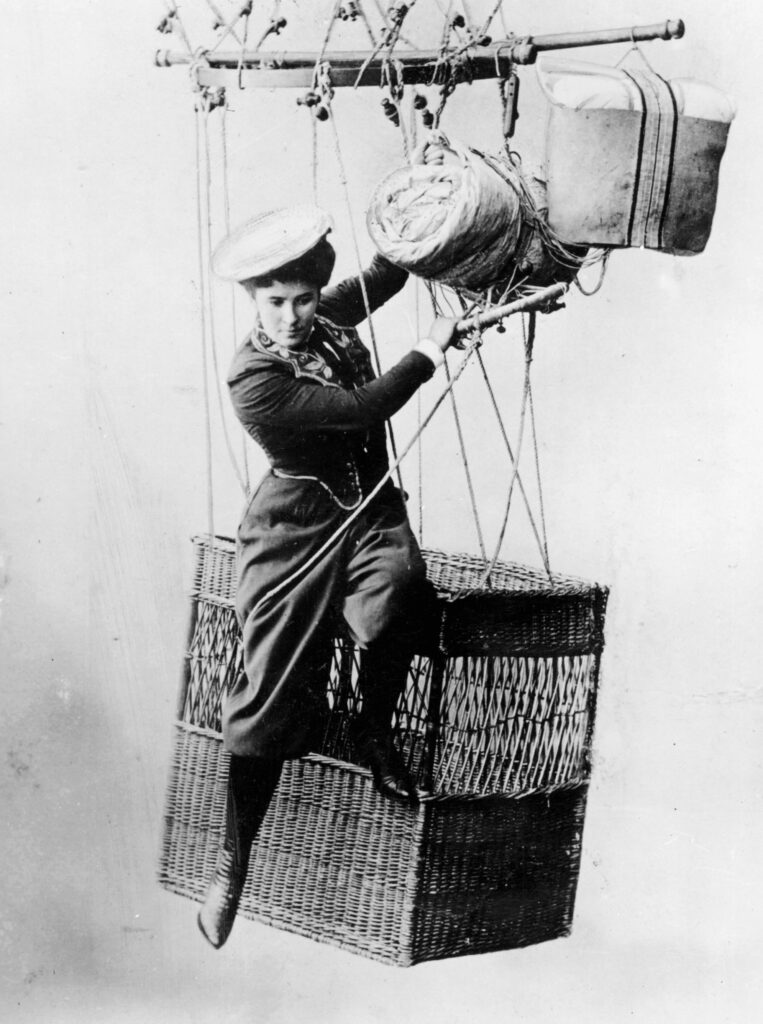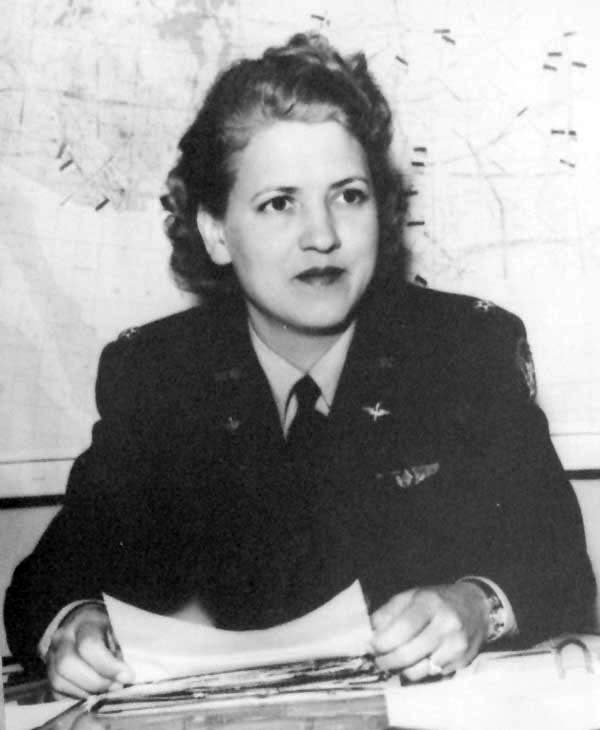
“Risk-Takers and Rule-Breakers”
Harriet Quimby (1875-1912)
Harriet Quimby was a risk-taker. Though born in Michigan, Quimby moved with her family to California in 1900 and began a journalism career soon after. It was that career that took her to New York, where, in 1910, she met aviator John Moisant at the Belmont Park National Aviation Tournament. Quimby fell in love with aviation and in 1911 became the first American woman to earn her pilot’s license. With this license, Quimby became an exhibition pilot, flying in air shows across the United States.
On April 16, 1912, Quimby took off from Dover, England and flew to Calais, France becoming the first woman to fly across the English Channel. Later that same year, Quimby lost her life when she and her passenger were suddenly ejected from her aircraft returning from Boston Light during an air show. Harriet Quimby was 37.

Katharina Paulus (1868-1935)
Katharina Paulus took to the air not in planes, but in hot air balloons. Born to working-class parents outside of Frankfurt, Germany, Paulus took up her mother’s trade as a seamstress. It was her skills as a seamstress that got Paulus into ballooning, where she met Hermann Lattemann, and began working for him repairing his balloons. Eventually, the two married, and began a career as a ballooning and parachuting team. It was during one of their parachuting stunts in 1895 that Lattemann’s chute did not open, and he fell to his death while Paulus watched.
After Lattemann’s death, Paulus continued to tour around Europe, giving parachute and ballooning shows, but she also began working on something to help prevent what happened to Lattemann from happening to someone else. In 1915, Paulus applied for a patent for a “rescue apparatus for aeronauts,” or the first collapsible parachute. This invention proved vital during World War I, when pilots took battles to the sky for the first time. Paulus produced 7,000 collapsible parachutes for the German army, and was awarded patents in Austria and Switzerland for her invention in the 1920s. Paulus also went on to become Germany’s first woman aerial acrobat, as well as the first German woman to get her pilot’s license.

Jacqueline Cochran (1906-1980)
Jacqueline Cochran did not let anything hold her back. Born Bessie Lee Pittman in Pensacola, Florida, Cochran had an uneventful childhood. In 1920, she married Robert Cochran when she was 13 or 14. Though they did later divorce, Jacqueline kept the last name Cochran, and decided to go by Jacqueline instead of Bessie. In the 1930s, Cochran became interested in aviation, and learned to fly in just three weeks. Two years later, she earned her commercial pilot’s license. Cochran worked with Amelia Earhart to open the famed Bendix race to women pilots after Cochran became the first woman to compete in that race in 1937. During this time, Cochran was known as a “speed queen,” as she set numerous different speed records in women’s aviation, including a transcontinental speed record.
When World War II began, Cochran was instrumental in starting the Woman’s Air Force Service Pilots (WASP) program. This program had women pilots fly planes for the non-combatant jobs for the air force, to free up men to fly in combat missions. From 1943-1944, Cochran led the program that trained hundreds of women to fly, and for her efforts she was awarded the Distinguished Service Medal in 1945.
Though she had already done so much for women aviators, Cochran still had one more record to achieve. While trying to break the woman’s speed record in 1953, Cochran flew a Sabre 3 at a speed more than 650 m.p.h., and went supersonic for a period of time. It was during this flight Cochran not only broke the woman’s speed record, she also became the first woman to break the sound barrier.


